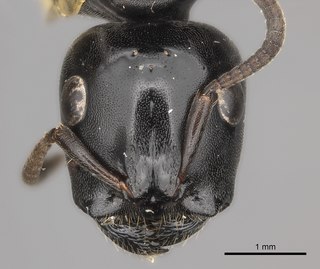
The Papaveraceae are an economically important family of about 42 genera and approximately 775 known species of flowering plants in the order Ranunculales, informally known as the poppy family. The family is cosmopolitan, occurring in temperate and subtropical climates, but almost unknown in the tropics. Most are herbaceous plants, but a few are shrubs and small trees. The family currently includes two groups that have been considered to be separate families: Fumariaceae and Pteridophyllaceae.

Brachystegia is a genus of tree of the subfamily Detarioideae that is native to tropical Africa.

Ancistrocladus is a genus of woody lianas in the monotypic family Ancistrocladaceae. The branches climb by twining other stems or by scrambling with hooked tips. They are found in the tropics of the Old World.

The Caricaceae are a family of flowering plants in the order Brassicales, found primarily in tropical regions of Central and South America and Africa. They are usually short-lived evergreen pachycaul shrubs or small to medium-sized trees growing to 5–10 m tall. One species, Vasconcellea horovitziana is a liana and the three species of the genus Jarilla are herbs. Some species, such as the papaya, bear edible fruit and produce papain.

The compact weaver is a species of bird in the family Ploceidae. It is found in Angola, Benin, Burkina Faso, Burundi, Cameroon, Central African Republic, Republic of the Congo, Democratic Republic of the Congo, Ivory Coast, Ethiopia, Gabon, Ghana, Guinea, Guinea-Bissau, Kenya, Liberia, Nigeria, Rwanda, Senegal, Sierra Leone, Sudan, Tanzania, Togo, Uganda, and Zambia.

The red-headed quelea is a species of bird in the family Ploceidae. It is found in Angola, Benin, Botswana, Burkina Faso, Burundi, Cameroon, Central African Republic, Chad, Republic of the Congo, Democratic Republic of the Congo, Ivory Coast, Equatorial Guinea, Eswatini, Ethiopia, Gabon, Gambia, Ghana, Guinea, Guinea-Bissau, Kenya, Liberia, Malawi, Mali, Mozambique, Niger, Nigeria, Rwanda, São Tomé and Príncipe, Senegal, Sierra Leone, South Africa, South Sudan, Tanzania, Togo, Uganda, Zambia, and Zimbabwe.
Thomandersia is the sole genus in the Thomandersiaceae, an African family of flowering plants. Thomandersia is a genus of shrubs and small trees, with six species native to Central and West Africa.

Gnetum africanum is a vine gymnosperm species found natively throughout tropical Africa. Though bearing leaves, the genus Gnetum are gymnosperms, related to pine and other conifers.
Triplochiton is a genus of flowering plants in the family Malvaceae. It is a small genus of trees comprising tall tropical African trees with palmately lobed alternate leaves like those of the maple and being included in the Sterculiaceae subfamily of Malvaceae.

The Northernbushbuck or harnessed bushbuck, is a medium-sized antelope, widespread in sub-Saharan-Africa. The northern bushbuck species has been separated from the Cape bushbuck, a southern and eastern species.

Pachyelasma is a genus of flowering plants in the legume subfamily Caesalpinioideae. It contains only one species, Pachyelasmia tessmannii, which is native to central Africa.
Stachyothyrsus is a genus of flowering plants in the legume family, Fabaceae. It belongs to the subfamily Caesalpinioideae. It includes two species native to tropical Africa.

Distemonanthus is a genus of flowering plants in the family Fabaceae. It belongs to the subfamily Dialioideae. It contains a single species, Distemonanthus benthamianus, a deciduous tree, which occurs widely but sparsely in the forest regions of Tropical West and Central Africa; it is sometimes confused with Pericopsis laxiflora due to similar morphological features.
Michelsonia is a genus of tree in the legume family, Fabaceae, where it is classified in the subfamily Detarioideae. It is a monotypic genus, the only species being Michelsonia microphylla. It is native to the tropical rain forests of the Democratic Republic of the Congo. The wood is used locally for construction work.
Eminia is a genus of flowering plants in the legume family, Fabaceae. It belongs to the subfamily Faboideae. It contains the following species: It includes four species native to south-central and southern Africa, ranging from the Democratic Republic of the Congo and Tanzania to Angola, Botswana, and Mozambique.
Craterispermum is a genus of flowering plants in the family Rubiaceae. It contains 16 species that occur in tropical Africa and Seychelles. It is the only genus in the tribe Craterispermeae, of which the divergence time is estimated at 34.8 million years ago.

Stemonuraceae is a eudicot family of flowering plants.
Baphiastrum is a genus of flowering plants in the legume family (Fabaceae). It includes a single species, Baphiastrum brachycarpum, a liana native to west-central Africa. It grows in Guineo-Congolian forest in Cameroon, Gabon, Republic of the Congo, Central African Republic, and Democratic Republic of the Congo.
Aubrevillea is a genus of flowering plants in the family Fabaceae. It belongs to the mimosoid clade of the subfamily Caesalpinioideae. It includes two species of trees native to west and central Africa, ranging from Senegal to Democratic Republic of the Congo.

Tetraponera aethiops is a species of ant in the subfamily Pseudomyrmecinae, which is native to tropical Africa. It is found living in the forest in association with Barteria fistulosa, a small tree.












